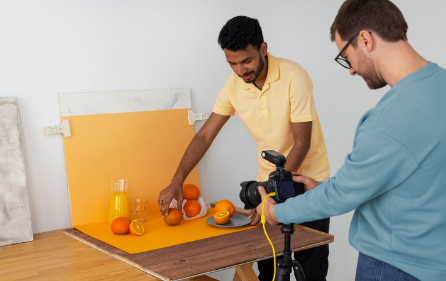Repmold: Revolutionizing Rapid Prototyping and Low-Volume Injection Molding

In the relentless pursuit of innovation, the bridge between a brilliant concept and a market-ready product is often the most perilous stage of development. For decades, inventors, engineers, and startups have faced a daunting chasm: the prohibitive cost and lead time of traditional injection molding tools for prototyping and small production runs. This fundamental market gap stifled creativity, slowed time-to-market, and placed advanced manufacturing out of reach for all but the largest corporations. Enter Repmold, a pioneering force that has fundamentally reengineered this process, offering a seamless, agile, and remarkably cost-effective pathway from digital design to high-quality, injection-molded parts. By leveraging advanced technologies and a deeply customer-centric approach, Repmold has not just entered the manufacturing landscape; it has carved out an entirely new paradigm, empowering innovators to iterate with unprecedented speed and scale production without the traditional financial barriers. This article delves into the core methodologies, distinct advantages, and transformative impact of Repmold’s service offering, illustrating why it has become the go-to solution for forward-thinking product development teams across the globe.
The cornerstone of Repmold’s revolutionary approach lies in its masterful application of rapid tooling, a process that stands in stark contrast to the conventional method of manufacturing hardened steel molds. Traditional injection molding requires the machining of massive, durable steel tools—a process that is exceptionally time-consuming, often taking several weeks or even months, and exorbitantly expensive, frequently running into tens of thousands of dollars. This made it entirely impractical for validating a design or fulfilling a small market test. Repmold颠覆s this model by expertly crafting molds from aluminum or other soft metals. These rapid tool molds can be produced in a fraction of the time, typically within days, and at a mere fraction of the cost of their steel counterparts. While designed for shorter production runs—anywhere from a handful to tens of thousands of parts—they faithfully produce components that meet stringent material and dimensional specifications. This strategic compromise on ultimate tool longevity in favor of agility and affordability is the key that unlocks the door for rapid iteration, allowing designers to test form, fit, and function with real injection-molded parts long before committing to the high cost of permanent tooling.
This foundational advantage translates into a cascade of tangible benefits that accelerate product development cycles and de-risk the entire process of bringing a new product to life. The most immediate and powerful of these benefits is the radical compression of lead times. Where traditional tooling can stall a project for months, Repmold’s rapid tooling process can deliver first articles in as little as one to two weeks, transforming a quarterly timeline into a weekly one. This speed is inextricably linked to the second benefit: dramatically lower upfront costs. By reducing the initial investment required to produce functional parts, Repmold effectively democratizes access to injection molding, freeing up capital for other critical aspects of development like marketing, further R&D, and inventory. Furthermore, this model facilitates effortless design iteration. If a flaw is discovered or an improvement is conceived during testing, modifying or even creating a new aluminum mold is a feasible undertaking, whereas changing a steel mold is a costly and time-intensive nightmare. This creates an environment where innovation can thrive through continuous, real-world testing, ensuring that the final design that eventually goes into mass production is thoroughly validated, market-ready, and optimized for success.
The applications for Repmold’s services are as diverse as the field of innovation itself, spanning every industry that relies on physical products. For startups and entrepreneurs, it provides a viable path to create high-quality, end-use products for crowdfunding campaigns or initial market launches without the need for massive venture capital backing. Established companies utilize Repmold for rapid prototyping, conducting thorough functional and user testing with parts that are identical to what will be produced in mass volume, thereby eliminating the uncertainties associated with 3D-printed prototypes that may have different material properties. Furthermore, the service is perfectly suited for bridge manufacturing, seamlessly covering the demand between the end of prototyping and the beginning of mass production with traditional tools, or for fulfilling ongoing needs for low-volume manufacturing, spare parts, and limited edition products. The versatility of the process accommodates a wide array of engineering-grade thermoplastics, enabling the production of parts that are functional, durable, and aesthetically superior, suitable for everything from consumer electronics and medical devices to automotive components and consumer goods.
Conclusion
Repmold has successfully dismantled the historical barriers that have long separated designers from the gold standard of manufacturing: injection molding. By reimagining the tooling process with a focus on speed, affordability, and flexibility, the company has become an indispensable partner in the modern product development ecosystem. It represents more than just a service; it embodies a philosophy of agile manufacturing that prioritizes iteration, validation, and accessibility. In doing so, Repmold empowers a new generation of creators to experiment more freely, launch products more confidently, and compete more effectively in the global marketplace. For any team serious about navigating the journey from concept to customer with efficiency and precision, understanding and utilizing the capabilities of Repmold is not just an option—it is a strategic imperative.
Frequently Asked Questions (FAQ) About Repmold
Q1: What exactly does Repmold do?
A: Repmold specializes in rapid prototyping and low-volume production using injection molding. They use cost-effective aluminum tooling to produce high-quality plastic parts quickly and affordably, bridging the gap between 3D printing and mass production.
Q2: How is Repmold different from a traditional injection molder?
A: The key difference is in the tooling. Traditional molders use hard steel molds that are very expensive and take months to produce. Repmold uses soft metal (like aluminum) molds that are much cheaper and faster to make (often in days), making them ideal for prototypes and short runs, though not for millions of parts.
Q3: What are the main benefits of using Repmold’s service?
A: The primary benefits are:
-
Speed: Significantly shorter lead times (often 1-2 weeks for first parts).
-
Cost Savings: Drastically lower upfront tooling costs.
-
Iteration: Ability to easily and affordably modify designs between production runs.
-
Quality: Parts are real injection-molded components with excellent material properties and surface finish.
Q4: What materials can be used with Repmold’s process?
A: Repmold can process a wide range of standard engineering-grade thermoplastics, including ABS, Polypropylene (PP), Polyethylene (PE), Nylon, Acrylic, and many more. The specific material choice depends on the part’s required strength, flexibility, temperature resistance, and other properties.
Q5: What is a typical production volume for a Repmold order?
A: Repmold is optimized for low-volume manufacturing. This typically ranges from as few as 10-100 parts for prototyping up to 10,000+ parts for bridge production or small sales batches. For volumes requiring hundreds of thousands or millions of parts, traditional steel tooling is usually more economical.
Q6: How do I get started and what do I need to provide?
A: The process typically starts by submitting a 3D CAD model (e.g., .STEP or .IGES file) of your part for a formal quotation. Repmold’s engineering team will then analyze the design for manufacturability (DFM) and provide feedback and a quote outlining costs, lead times, and any recommended design changes to optimize the part for molding.
Q7: Does Repmold offer design for manufacturability (DFM) analysis?
A: Yes, this is a critical part of their service. Their engineers will provide a detailed DFM report to help optimize your part design for the injection molding process, ensuring it can be produced efficiently, cost-effectively, and with high quality. This includes advice on draft angles, wall thickness, rib design, and other crucial factors.
Q8: Can I use a part made from a Repmold mold for end-use in a product I sell?
A: Absolutely. Parts produced via Repmold’s process are genuine injection-molded components made from production-grade materials. They are fully functional and are commonly used for end-use products in low-volume production, market testing, and crowdfunding campaigns.



